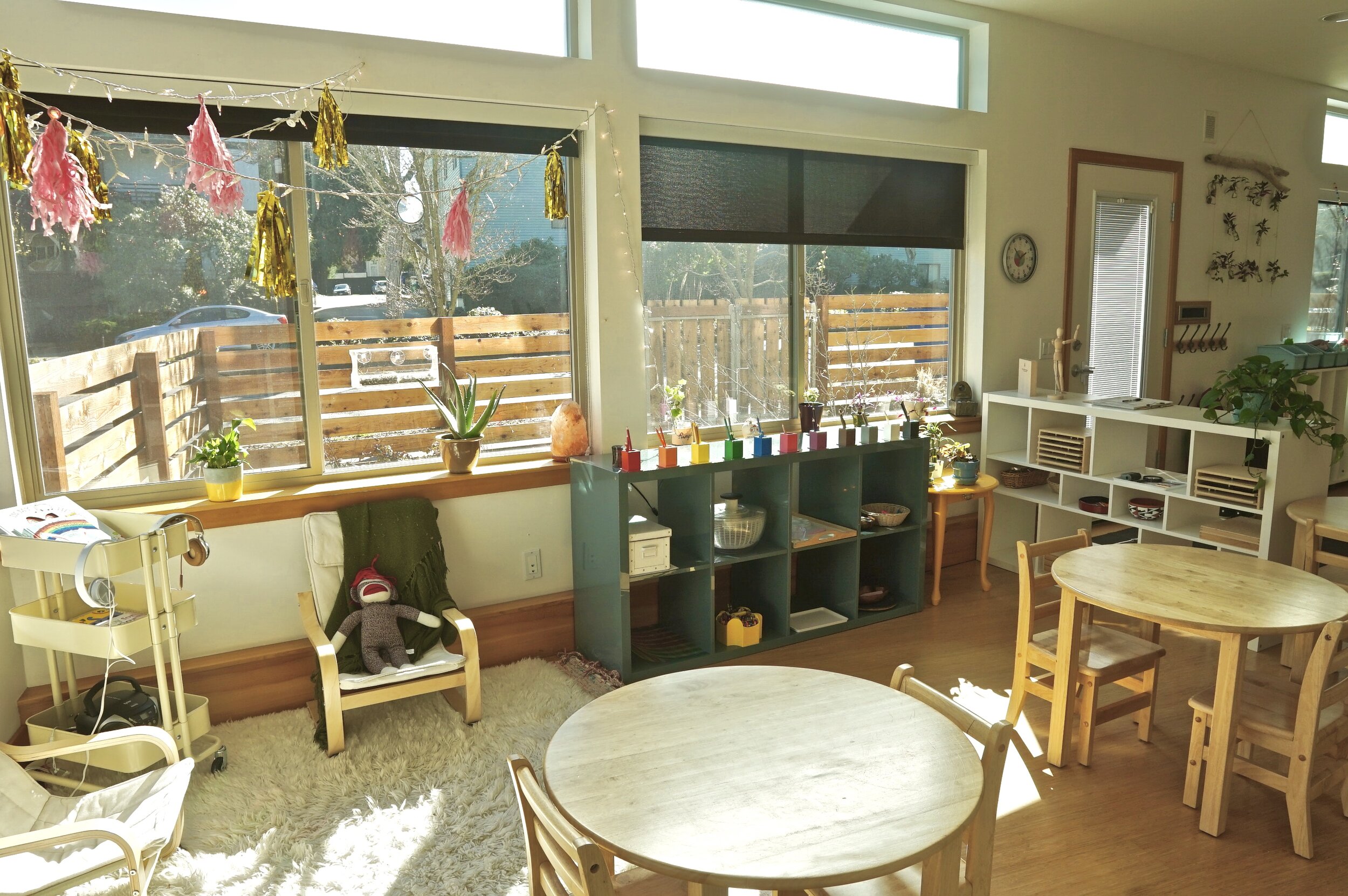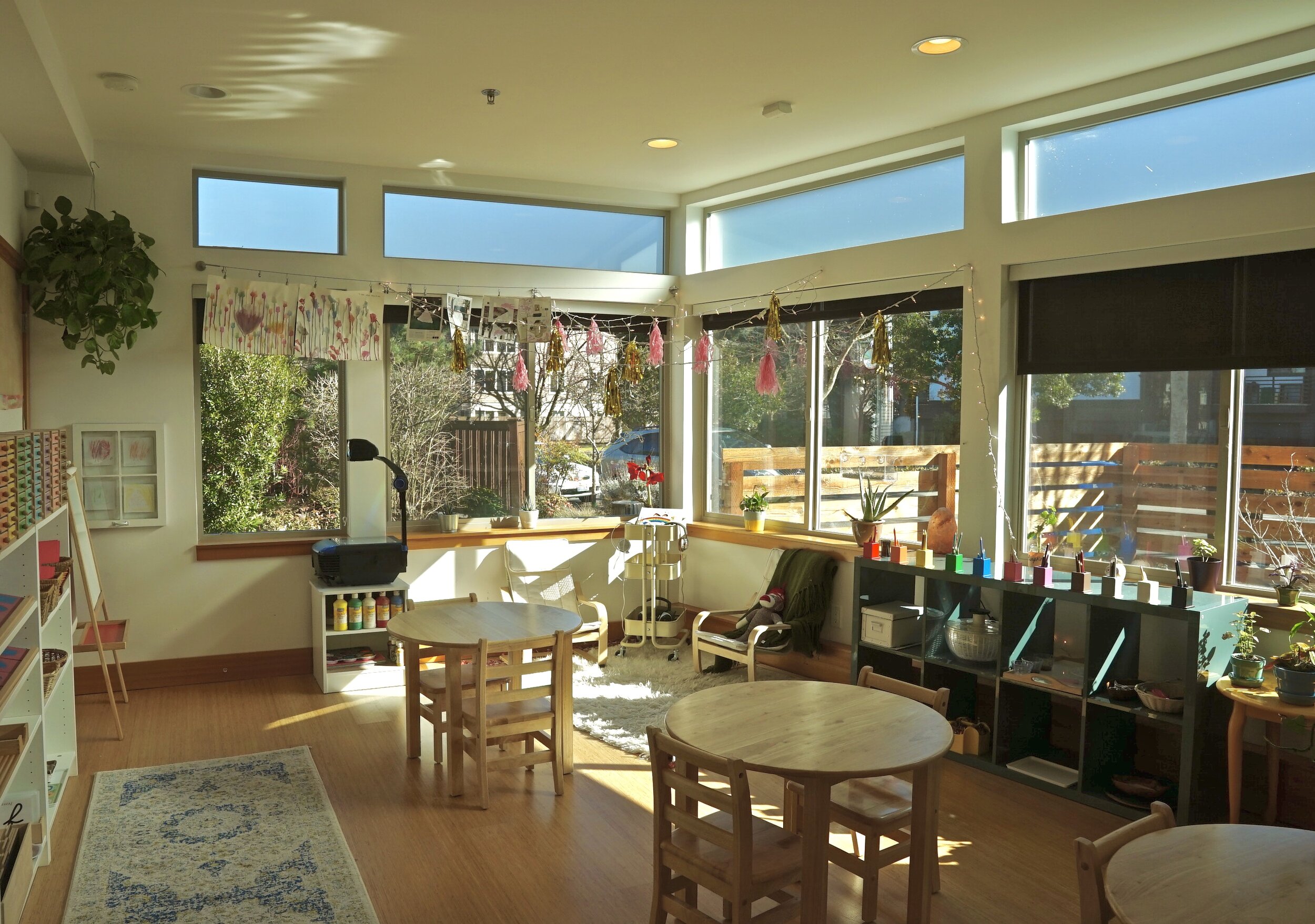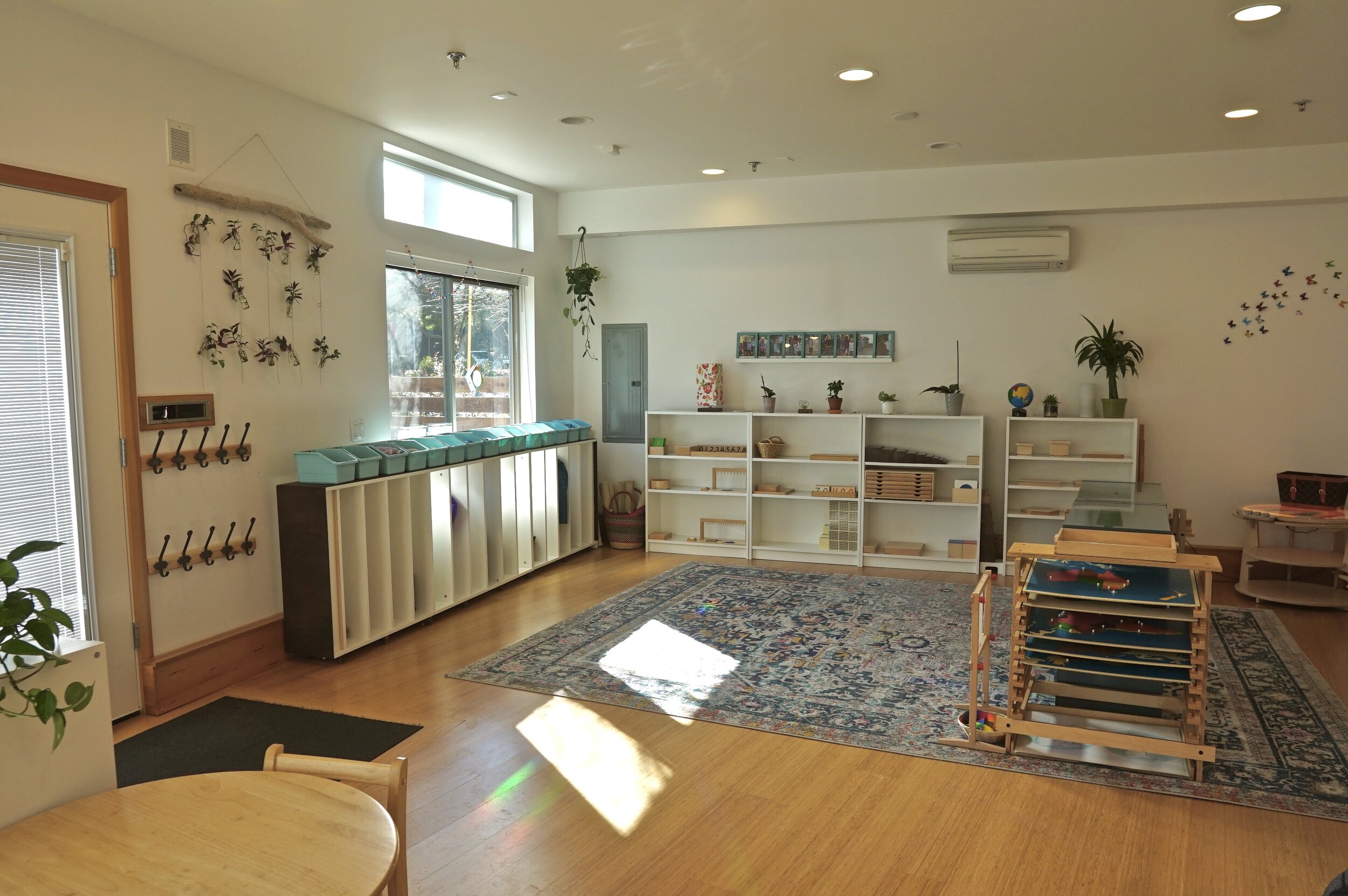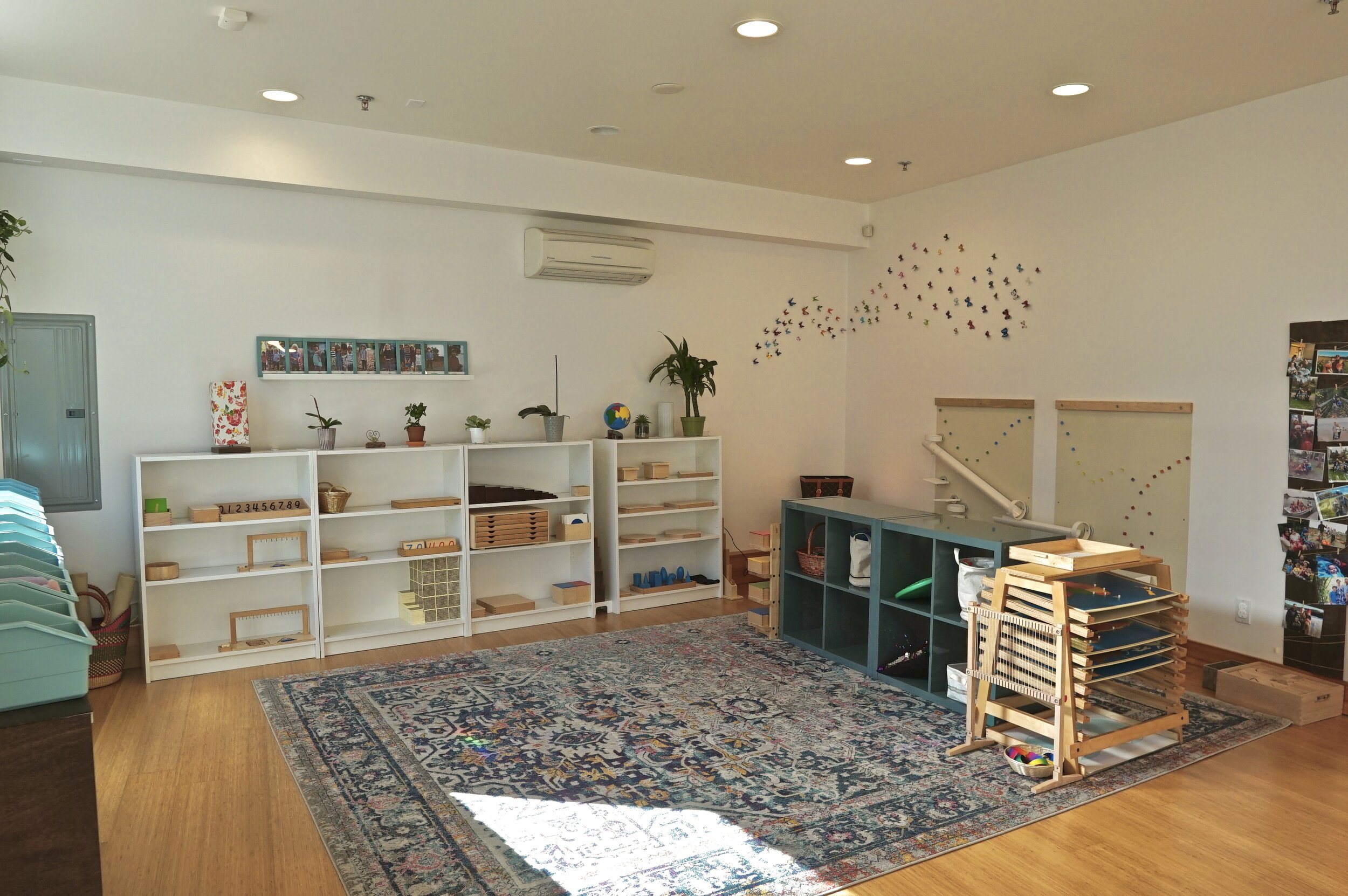Montessori Environment Design Consultations
My name is Erica Stuckey and I’d like design a Montessori space in your home! Please feel free to email anytime with questions or if you’d like to discuss custom options for your home environment.
Setting Up the Parent for Success
For over 7 years, my passion has been creating purposeful, nurturing, eco-conscious, and educational environments. Since becoming MACTE and Montessori certified, I’ve trained and observed co-educators, facilitated the growth of over 180 children, studied and blended learning philosophies (Montessori, Waldorf, Reggio), and opened a beautiful school on an extremely tight budget. In that time, I’ve mastered the craft of putting together an environment, while making items multi-purpose and multi-function. I am passionate about building out spaces that are fun and challenging for the child, but also calm and peaceful for reflection. I am confident that my approach to create intentional learning environments tailored to both your home and your child will foster higher levels of focus, learning and retention. I believe many people can make something beautiful, organized and ‘Pintrest-worthy’—I try to take a different approach. I design spaces that are practical first and beautiful not just in their aesthetic but also in how snugly they fit your child and home.
“The greatest sign of success for a teacher… is to be able to say, ‘The children are now working as if I did not exist.’” –Maria Montessori
Maria Montessori developed a philosophy that allowed children to explore and be hands on with their environment. In this model, the teacher is but a guide and not the main focus. In the home, I want to offer the parent a system of being a guide, and not have the burden of being your child’s main focus for attention/direction. Children have a natural attraction to learning. With my child-first approach, I will customize a space that blends their personality and interests with practical setups that foster intrinsic motivation and self-fulfillment.
Planning for the Future: Infrastructure of the Home
When setting up my school, it was very important that the environment be designed with the future in mind. In the past, I’ve watched teachers and directors waste hours upon hours shuffling their environments at least twice a year—which led to disarray and confusion for the children. Since opening the school in 2017, 90% of the classroom has remained the same space I originally created. This continuity has allowed children to live fully independent lives within the class. A well planned environment gives children a feeling of ownership over their space. This creates a spark in the child where they want and can clean up after themselves, respect their valuables, and find happiness with less is more. Let’s bring this success to your home! I want to set up an environment that won’t need to be changed for the foreseeable future—a space that can adapt to change, but the shell of the space will remain the same. The time, effort, and cost we put into designing the space should feel like lasting infrastructure vs a temporary band-aid.
Overall Goals
Provide an environment with a soulful approach—a place where a child feels safe, calm, productive, and welcome.
Organize a beautiful, inviting home classroom.
Put together space for rotating materials, which allows for space to adapt and grow over time.
Create a space that meets basic learning goals, as well as offers space for interests, movement, and mindfulness.
Offer moments for care of the environment, care of self, cooking, and gardening.
Space that teaches life skills like time management, conflict resolution, current events, community service, and public speaking.
Be environmentally conscious—reduce, reuse, recycle.
Meet you where your budget is. We can either start fresh with new materials, or we can do our best to use items you already have around the house.
Put together a yearly work project—perhaps a quilt, timeline of a topic, write book, etc.
Set up a cozy space for mindfulness.
Principles of the Space
Purposeful Design
Minimalism
Natural Materials
See Through Storage
Everything in Order
Make Everything Accessible
Independent Learning
Peaceful
Multi-Function
Adaptable
What is the Process?
There are two options—we can do a full house approach or we can do a single room design.
Full House Design
The full house approach will entail readjusting the child’s spaces throughout the house. This includes home set up with consideration of important routines, including:
Getting dressed
Making breakfast/lunch/snacks
Toy clean up
Grooming of self
Chores
Bedtime
Outdoor play/learning
Also includes all of the items listed in single room design
Single Room Design
Layout for work/play
Toy organization
Learning items grouped for effective engagement
Organized storage closet for ability to rotate items
Overall beautification of the space
Put together/incorporate existing daily rhythm
Incorporate STEAM learning where possible
Reflection/Peace/Mediation area
Project Management
Only stay for the fun parts— I’ll do all heavy lifting. I’ll draft drawings for space design, organize shopping lists, maintain budget, and make adjustments as you notice glitches that need tweaking.
The Prepared Environment
No matter if you choose to complete full house design or single room design, outlined expectations are very important to ensure success.
Phase 1:
Pre-Design: Brainstorm
This is the dialogue programming part of a project—done before I put pen to paper and it provides a foundation on which I build our environmental design ideas. This will include a home visit to assess the space.
How do you live in your house—Working from home? Homeschooling? Only home to relax?
What layout would be most effective for your needs? Have a specific space or do you need help finding the right space?
What areas in the house do you value most and want to see restored to its purpose?
What are the characteristics that you want reflected in the design? I just want a general understanding of the style and aesthetics I should be designing for.
Phase 2:
Schematic Design: Defining the Look and Feel and Setting Materials Budget
I use digital sketches to explore various design ideas, material order, and overall aesthetic. I make sure clients are tied into this process and can add their ideas and filter through mine as we narrow in on an environment to further develop. This is the phase where we define what the look and feel of the environment, how the spaces will be laid out and flow, and start conversations about materials and aesthetics. To make sure all dreams are realistic, we will also begin discussing materials budget plan. Materials budget is completely up to the client, and all types of budget plans are welcome! Maria Montessori was able to put together prepared environments for next to nothing for children who couldn’t afford care. Environment design can fit into any materials budget, and it’s amazing all the wonderful things we can reuse and repurpose.
Phase 3:
Design Development: Refining the Design
Once a concept is agreed upon, we proceed into Design Development. Here I take the Schematic Design work and start defining more of the space. This includes beginning working on the details, considering how it will be put together, refining the layout, and reconciling the design ideas with the set materials budget. It is during this phase that we start locking in all of the dimensions, sizes, and material selections so we can proceed into the next phase.
Phase 4:
The Prepared Environment: Putting Together Success
Now it’s time to put all the hard work in motion! At this stage, it’s time to enter the home. All installation and organization work will be done by me, unless specifically specified in previous stages—such as needing help with building of materials. When possible and enjoyable, the child will be invited to create/organize materials to help make them feel more ownership of the space. Perhaps they may paint a shelf, help clean, draw up a daily rhythm, choose which items are favorites, decorate with hand drawn art, etc—there is always a fun way to help!
Following Up
Once the environment gets set up and your child has utilized the space, there will be a chance to have a reflect on the set-up. As part of purchasing a package, I will schedule a follow up meeting for 2 hours (video or in person) within 30 calendar days of the last in-home follow up. During this time we can talk about changes you’d like to see or questions you may have. Any other communication will default to my hourly fee schedule.
Cost
I can either do a package cost (full house or single room) or do payments by the hour. Depending on the space and expectations, we can discuss the budget you had in mind and how we can accomplish your goals within it.
Sometimes you just need some advice on Montessori principles and way of living, preschool questions, need assistance with minimizing toys, help with small behavioral struggles, or you already have a good environment just needing some quick tweaks. We can do hourly consultations through video chat or in person.
In Person: $120 Hour / $70 Half Hour
Video Chat: $100 Hour/ $60 Half Hour
Need more elbow grease for your home? Check out our package options:
Single Room Prepared Environment Cost: starting at $2,000
See details above in “The Prepared Environment”
Full House Prepared Environment Cost: starting at $3,000
See details above in “The Prepared Environment”





